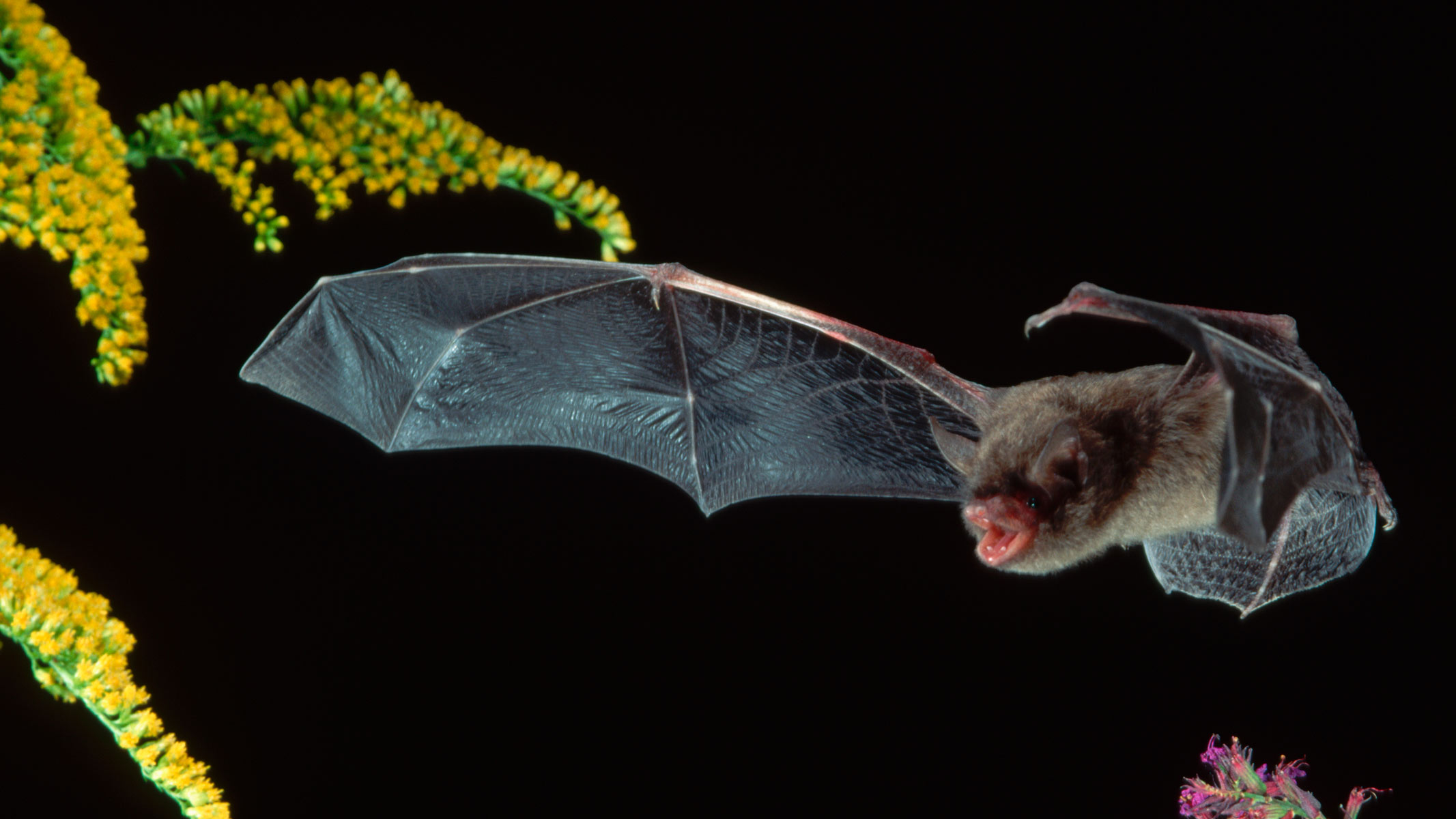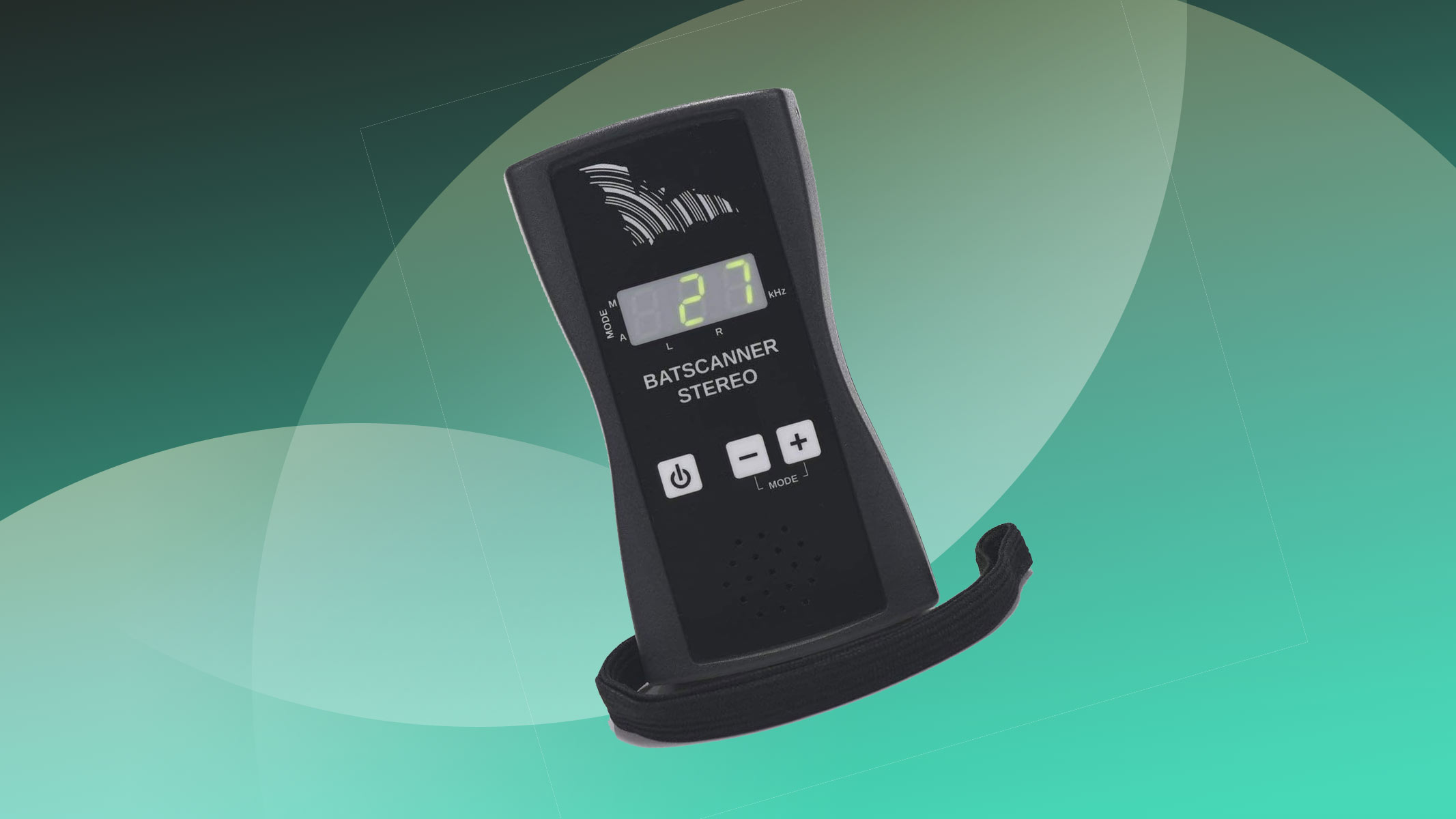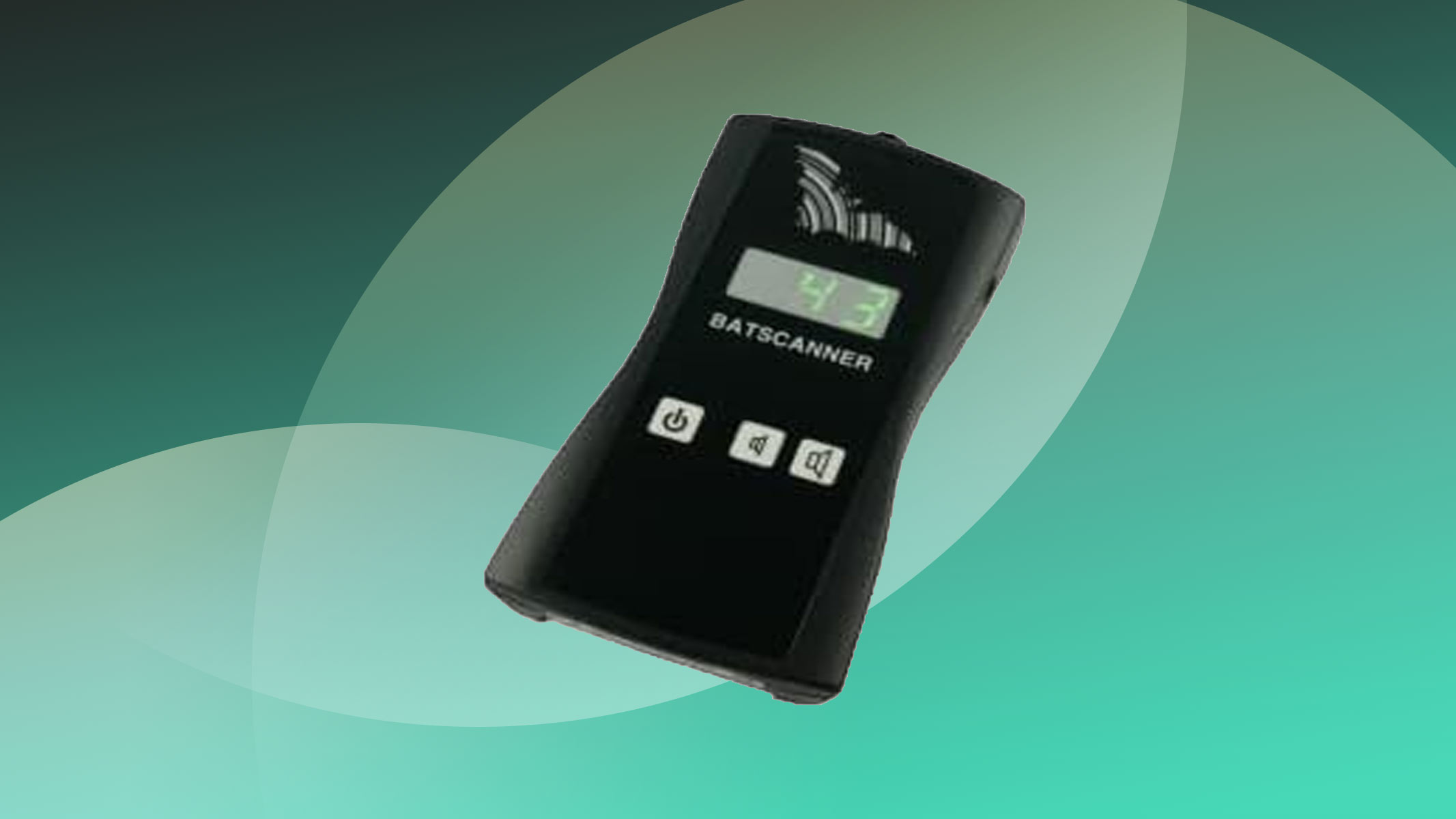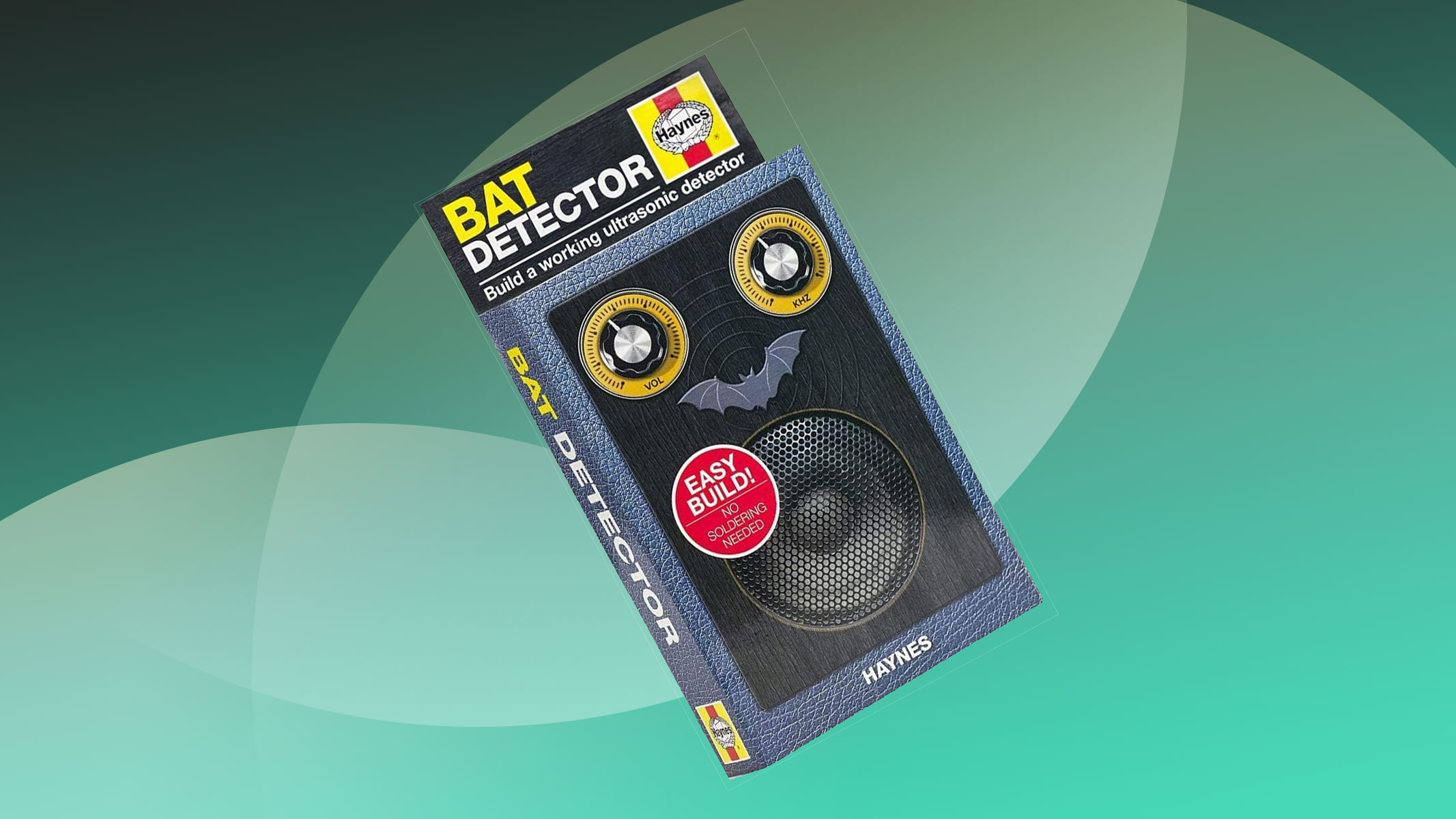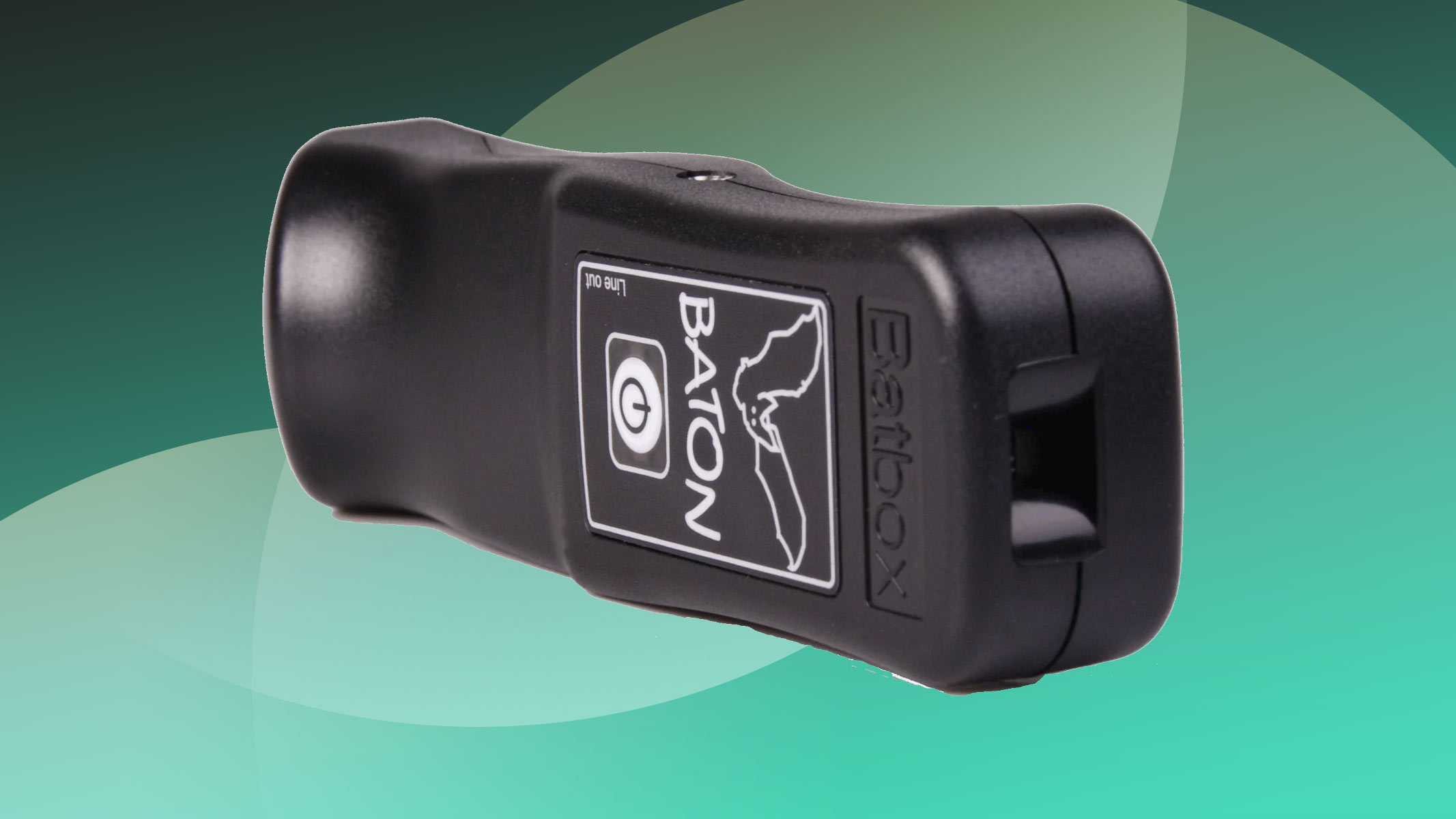Bats are notoriously hard to spot due to their crepuscular and/or nocturnal behavior. While you may be lucky enough to catch the occasional glimpse as they swoop overhead at twilight, a bat detector can enhance this experience tenfold, pushing detection well through the night. If you’ve never used a bat detector before, we can attest to how remarkable it is to hear bats for the first time.
Bat Biologist Donald Solick from Vesper Bat Echolocation Services suggests general observers might prefer to use ‘active’ bat detectors, rather than ‘passive’ ones, explaining that active bat detectors are “typically handheld and have screens so that you can see and hear bat echolocation in real time.” With ‘passive’ detectors deemed more appropriate for surveys and long-term field work over weeks and months at a time.
While the top five bat detectors we recommend all have active configuration (one includes passive), bat detection might not be for everyone. So you may be interested in our other guides on the best binoculars for bird-watching and the best cameras for wildlife photography.
The quick list
Here’s an overview of the best bat detectors we’ve found. We give you some details here but, if one grabs your eye, you can find more detailed information further down the page.
The best overall
If you’re looking for a ‘smart’ version of a bat detector, the Pettersson M500-384 offers you that. It acts as a microphone and connects to your phone, allowing you to hear, and see, the sounds of bats via waveform and spectograms.
Read more below
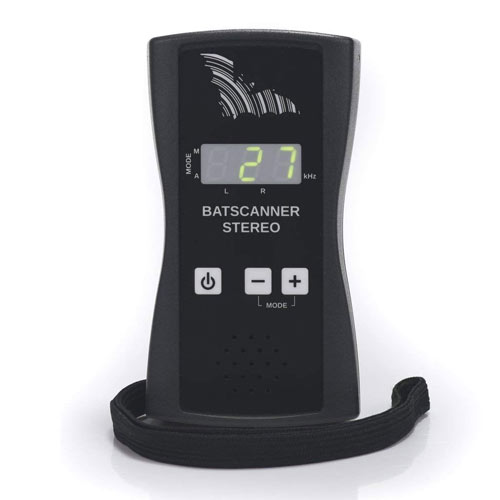
Elekon Bat Scanner Stereo
The best for enthusiasts
The Elekon Bat Scanner Stereo ultrasonic bat detector has dual opposing mics, allowing you to hear bats while also helping you detect the direction they are flying. It uses heterodyne technology. Perfect for those who are established bat spotters.
Read more below

The best for beginners
The Elekon Bat Scanner is simple to use — turn it on and you’re ready to start bat detecting. Using a digital heterodyne to tune the bat call frequencies to the human hearing range, this bat detector also gives you a digital readout of the frequency of passing bats.
Read more below
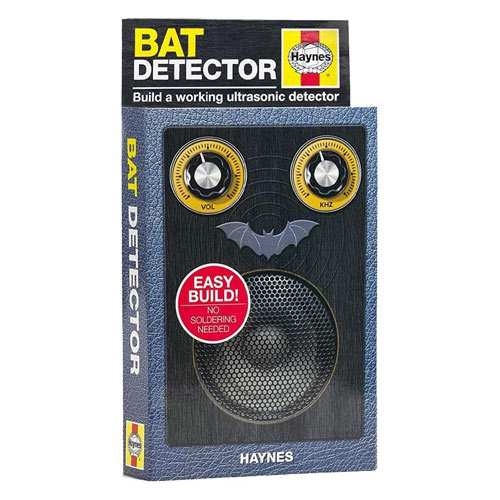
Haynes Bat Detector Construction Kit
The best build your own
A cheap and cheerful way to get outdoors bat detecting. This offers an alternative to the more expensive bat detectors available, allowing you to build your own ultrasonic detector. Even better, no soldering skills are required.
Read more below
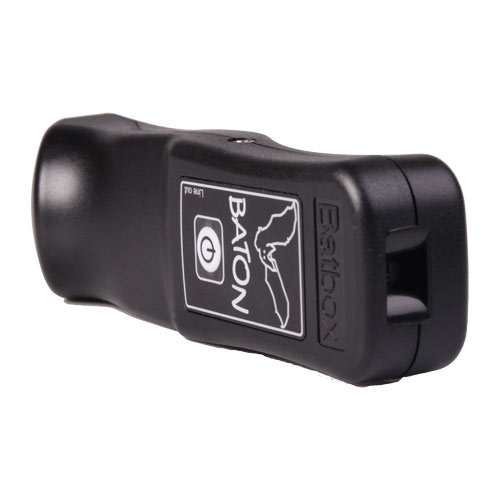
The best budget option
If you’re interested in starting up bat detecting but don’t fancy building your own detector, the Batbox Baton comes in at a reasonable price, allowing you to experience bat calls without spending a huge amount.
Read more below
The best bat detectors we recommend in 2025
Why you can trust Live Science
Our expert reviewers spend hours testing and comparing products and services so you can choose the best ones for you. Find out more about how we test.
The best overall
The Pettersson M500-384 is an ultrasonic microphone, using the same advanced microphone technology as the field-tested (and respected) Pettersson D500x. While other bat detectors use heterodyne technology to capture bat calls, this bat detector works a little differently. It has a plug and play design, with this bat detector acting as a microphone. You then need to link it up to another device, such as a tablet, laptop or phone, to use Pettersson’s BatSound Touch Lite software to hear and record the bat calls. Not only this, but it is compatible with third-party apps, some of which can allow you to see the bat calls through various visuals like Sonobat Live. On other bat detectors, a recording function is not possible so this really is an added bonus. Plus, due to its recording capabilities and connection to third-party apps, the Pettersson M500-384 can be used for short-term passive bat monitoring as well as active monitoring. It gives you the best of both worlds.
When you’re out and about bat detecting, it can be useful to have a bidirectional microphone to capture sounds from all around you. The Pettersson M500-384 offers this as well as a unidirectional microphone. To change between the two, you just need to remove or replace the directional horn.
While this bat detector comes in at the higher end in terms of price, we think it’s justified due to its advanced and expert microphone technology, the same of which is used in the field by experts in the Pettersson D500x, and its ability to connect to useful third-party apps that can transform your bat detecting experience. You’re getting expert technology for a fraction of the price. However, this unit may not suit those new to bat detecting as it’s quite technical in comparison to other bat detectors. Therefore, we’d recommend taking a look at the Batbox Baton or Elekon Bat Scanner for those new to this hobby. These units are a lot less overwhelming and much simpler to use.
The best for enthusiasts
The Elekon Bat Scanner Stereo uses an ultrasonic microphone to capture high-frequency bat calls. Using heterodyne technology, this bat detector has an automatic adjuster built in, meaning it automatically adjusts to the different frequencies of the bat calls, allowing you to just listen. This may not seem like a huge deal but other bat detectors do not have this automatic adjustment, meaning the user has to constantly tune their detector to capture the calls. With bat calls covering a wide range of frequencies, this can mean you miss some while on a different frequency. Constantly manually changing the frequency involves lots of fiddling, taking you away from the experience itself. However, there is thought behind this detector as manual adjustment is also possible. So, if you’re searching for a certain bat, you can hone in on that frequency alone. This versatility is a bonus.
Unlike the Pettersson M500-384, no further technology is needed to use this bat detector. The detector itself does all of the work. What this means in practice is that you can be fully present with what’s going on around you, rather than looking at screens. Furthermore, the Bat Scanner Stereo has two mics and is designed to be used with headphones to allow the user to really hear what’s going on around them. The two microphones also make it easier for the user to follow the bat in flight or to locate where the call is coming from. With these features, we think this bat detector would suit enthusiasts perfectly, allowing them to have a closer experience in multiple ways. No third-party apps are required to use this detector but this does mean there isn’t a recording function. Therefore, it is better suited to active bat detecting rather than passive.
While this isn’t a cheap investment, it has some thoughtful features, including the automatic adjustment so you never miss a bat call and the ability to use headphones. Its simplicity allows anyone of any age to pick it up and get listening. However, if you’re looking for a more advanced technological experience, the Pettersson M500-384 may be more up your street.
The best for beginners
The Elekon Bat Scanner is very similar to the Bat Scanner Stereo with the main difference being that it only has one microphone instead of two. This makes it ideal for beginners or for those wanting to try out bat detecting before investing in a more substantial piece of kit.
Similarly to the Bat Scanner Stereo, it has an automatic adjuster so it will capture bat calls without you needing to do anything — the built-in converter searches for all the bat call frequencies, meaning you don’t need to worry about missing any calls. You simply turn it on and you’re ready to start bat detecting. This simplicity lends itself well to beginners who may never have used a bat detector before. There is no need to work out what frequencies you need as the detector does it for you. However, as you get more experienced, or perhaps learn a thing or two about bat call frequencies, you can use the manual adjuster to search for a specific bat.
While the detector constantly searches for bat call frequencies, when it does find one, the peak frequency will be displayed on the digital display. This can be a good learning tool for recognising the frequencies you most often hear and for narrowing down what bats you might be detecting. This experience is really useful for beginners to get a feel for the hobby and to improve their knowledge.
You can get cheaper beginner bat detectors than the Bat Scanner but these will often have only manual adjustment. The added benefit of the automatic adjuster means this can be used by anyone of any knowledge or age — it can become part of a family walk with each member being able to use it and learn something along the way. However, if you’d like more technology, the ability to visualise the bat calls or record, the Pettersson M500-384 would suit you better.
The best build your own
This build your own kit is a slightly unusual way to start, or continue, your bat detecting hobby. As most bat detectors start at around $80 and can cost anywhere into the thousands, this is a super cheap way to give the hobby a go. And, what’s more, if you realise it isn’t your thing, you haven’t thrown lots of money away.
Reviews on Amazon suggest it only takes around five minutes to build and doesn’t involve any soldering. It has a cardboard enclosure so this is something to be mindful of if you’re likely to be caught in a shower. However, users do comment this is sturdier than you might think. One of the main comments left by users was the lack of detail on the frequency dial, making it hard to know which frequency you are on and thus what bats you are actually listening to. This isn’t always a bad thing — for those interested in hearing nature around them, the frequency won’t matter as long as you can hear the bats. And for those who are more keen to listen and find out which bats they are hearing, this can be a bit of a guessing game and involve some research, which isn’t a bad thing when trying to learn something new. However, if you want the frequencies to be clearer, you might prefer investing in a more expensive kit such as the Bat Scanner or Bat Scanner Stereo.
The longevity of this kit is disparate. Some users commented to say this detector lasted a while, while others commented that it didn’t continue working for long. Some have adapted the device and soldered parts, allowing them to use it for years on end. If you’re after a cheap way to listen to bat calls, this is a good option. But if you’re also looking for a bit of a toy to play with and adapt, this could also be for you. And for $38, compared to hundreds of dollars to hear bats, you can’t complain.
The best budget option
The BatBox Baton uses a different technology to capture bat calls, known as frequency division. Unlike heterodyne technology, which captures a specific bat call frequency and then reduces it down to within the human hearing range by mixing it with an internal frequency, frequency division divides the frequency by a factor of 10. This means that if you hear bat calls at 50kHz, they will be reduced to 5kHz by the bat detector, making it audible to us. The main difference for a user is that a heterodyne bat detector tunes to a certain frequency and picks up the bat calls within that frequency only, allowing for species identification. However, frequency division bat detectors, like the BatBox Baton, detect all frequencies within the bat echolocation range and divide this range of frequencies, meaning you are not able to identify specific species. Therefore, the BatBox Baton is better suited to those who want to just hear the bats, rather than identify them. It would also suit those looking to get an idea of passage rates within their garden, rather than those wanting to know exactly what bat is flying overhead.
One great thing about this bat detector is that it comes with access to the BatScan software. This software allows you to see the bat calls in terms of sonograms which is an added bonus to those interested in such things. You can also record bat calls with the BatBox Baton, allowing you to then analyse this data later on using the BatScan software. However, one thing to bear in mind is that the BatScan software is primarily a Windows software. Those with Macs will have to take a few extra steps to be able to use it, one of which is to create a mimic of the Windows environment using Parallels. Another nice touch is that you can use headphones with this detector, allowing a richer experience. Although it is recommended to use headphones with a volume control.
The BatBox Baton is a great detector for the price, coming in just over $120. It isn’t as fancy and techy as the Pettersson M500-384 but it’s a good starting point for those looking for a more advanced bat detector than the Bat Scanner, for example. It would suit those whose pockets aren’t deep enough for the Pettersson M500-384.
Best bat detectors: comparison
|
Product |
Type of bat detector |
Technology |
Battery life |
|
Pettersson M500-384 |
Active and passive |
Ultrasound microphone |
Unlimited – USB powered |
|
Elekon Bat Scanner Stereo |
Active |
Heterodyne |
20-25 hours |
|
Elekon Bat Scanner |
Active |
Heterodyne |
20-25 hours |
|
Haynes Bat Detector Construction Kit |
Active |
Ultrasonic, heterodyne |
Unspecified |
|
Batbox Baton |
Active |
Frequency division |
30 hours |
Our expert

Donald Solick
Donald Solick has been involved with bat research for nearly 30 years and has specialized in acoustic monitoring of bats for 18 years. He owns Vesper Bat Echolocation Specialists, which provides analysis of bat acoustic data and training on how to identify bats by their echolocation calls. Donald is also writing two books on the subject, and he works for the Electric Power Research Institute where he conducts research to minimize the impacts to bats from wind energy turbines. When he isn’t thinking about bats, Donald is raising his non-binary teenager, scuba-diving, traveling, and dancing Cuban salsa.
Best bat detectors: Frequently asked questions
What’s the difference between frequency division and heterodyne technologies?
Frequency division bat detectors detect the entire frequency range of bat echolocation and then divide this frequency by a number to bring it into the range of human hearing. This means you hear the entire range of bat calls across a broader frequency range. These detectors are good for listening to the bats and recording passage rates. This lends them well to researchers who may be interested in knowing how many bats are using a certain place to roost. However, heterodyne bat detectors use a tuning system. Our expert, Donald Solick, commented that heterodyne bat detectors “can be tuned to a specific frequency and are best used to actively identify a flying bat.” They work by you selecting a specific frequency (or some have an automatic tuner) so you only hear bat calls that are at that frequency. This can help with species identification. Both of these types of bat detectors are good but choosing the right type for you will come down to you knowing what information you are wanting to capture.
Our expert, Donald Solick, commented that heterodyne detectors are better to use in places with fewer species as “many can be identified simply by the frequency they echolocate at.”
For those who are more serious hobbyists, Donald also noted the difference between commerically available bat detectors and those you can purchase for home use, “Most commercially available detectors now record full-spectrum data, which means the microphones will record the full waveform of sound. The advantage of full-spectrum is that you record more information from bat calls, which tends to provide more accurate identification.”
What’s the difference between active and passive bat detectors?
Active bat detectors are normally ones that you can carry with you and hold up to detect the bats above you. They are portable and, as Donald Solick, our expert, commented, they are “typically handheld and have screens so that you can see and hear bat echolocation in real time”. Donald Solick also explained what active detectors are good for, “Active detectors are also useful if you are capturing bats and want to obtain reference calls of known, free-flying individuals.” Of course, the capturing of bats should be left to the professionals.
Passive bat detectors are usually stationary detectors that are placed and left in a certain location. Donald Solick explained, “Passive detectors are effectively boxes with a built-in microphone that you program and set outside to record bats as they fly by.” This type is often used by researchers to capture information on bat activity within certain environments. As Donald Solick noted, “They don’t provide instant gratification or interactive components. These are most often used by researchers doing surveys over multiple nights or months.” He remarked that “For the highest quality recordings, some devices allow one to attach a microphone to an audio cable and mount it away from the body of the detector.” Although these would set you back $700-$1000.
However, this doesn’t mean passive detectors wouldn’t suit an enthusiast but Donald did note there is a price difference between active and passive detectors, with him commenting that active detectors “tend to be cheaper than passive detectors.”
Usually, passive detectors have the ability to record the bat activity so researchers can then analyse this data later on. Active bat detectors tend not to have this recording ability as they are more for in the moment bat detecting.
How to choose the best bat detector for you
Consider your purpose Knowing why you want a bat detector in the first place is key to understanding what type of bat detector will suit your purpose. You don’t have to spend a lot to get a good detector but if you’re looking for more information or the ability to see sonograms of the bat calls, you’ll want to be looking for slightly more advanced bat detectors. It’s also important to consider whether you’re wanting to capture bats out and about or whether you are more interested in what’s happening in your garden. Knowing where you’re likely to be bat detecting will influence your decision as to what bat detector is the right one for you, and whether a passive or active one is better.
Consider what you want to learn Different technologies will allow you a different experience so this is important to remember when choosing a bat detector. A heterodyne bat detector will allow you to identify species in real-time which makes them ideal for those wanting to learn what bats may be in their favourite park or their own garden. However, as frequency division detectors capture a broader range of bats at one time, this can help users to get a rough idea of how many bats may be roosting in a certain place. Some bat detectors can also be paired with software that develops sonograms from the recorded bat calls. Knowing what level of detail you’re after and what you want to learn will help you decide whether a standard active heterodyne detector is sufficient or if you perhaps want something that can be paired with more tech for further analysis.
Be aware of your budget Some bat detectors that are used in the field can reach into the thousands. Of course, you don’t need to spend this to get a good detector that meets your needs but it’s also wise to consider how much you’re willing to invest in this hobby. The super cheap build your own kits are a good option if you’re wanting to try it out and see if you enjoy it. The mid-range detectors offer great technology without you needing to invest in the same kit as researchers. Whatever your budget, be aware of how much you’re willing to spend and this will help to narrow down your options.
What does our expert recommend? We spoke to Bat biologist, Donald Solick from Vesper Bat Echolocation Services, who explained that active bat detectors are “typically handheld and have screens so that you can see and hear bat echolocation in real time”.
However, a passive bat detector is one that you can place stationary in an area that will monitor bat calls and activity.
Donald Solick commented that “they don’t provide instant gratification or interactive components. These are most often used by researchers doing surveys over multiple nights or months.”
Deciding what experience you’d like will help you choose whether an active or passive bat detector is for you.





